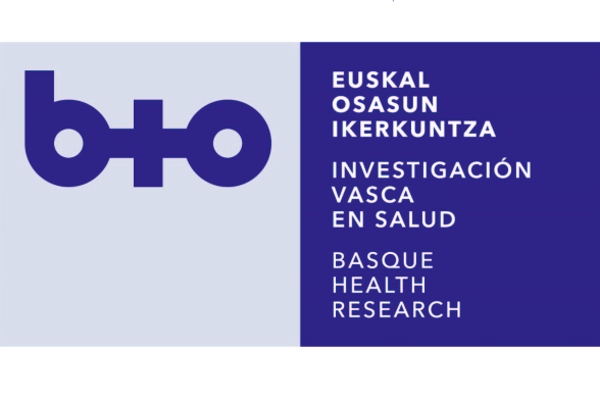BIO Basque Health
Center


University of Utah
Salt Lake City, Estados UnidosPublications in collaboration with researchers from University of Utah (46)
2024
-
At-admission prediction of mortality and pulmonary embolism in an international cohort of hospitalised patients with COVID-19 using statistical and machine learning methods
Scientific Reports, Vol. 14, Núm. 1
-
Damage measured by Damage Index for Antiphospholipid Syndrome (DIAPS) in antiphospholipid antibody-positive patients included in the APS ACTION registry
Rheumatology (United Kingdom), Vol. 63, Núm. 3, pp. 772-779
-
Food biodiversity and gastrointestinal cancer risk in nine European countries: Analysis within a prospective cohort study
European Journal of Cancer, Vol. 210
-
Minimal information for studies of extracellular vesicles (MISEV2023): From basic to advanced approaches
Journal of Extracellular Vesicles, Vol. 13, Núm. 2
-
Thrombosis recurrence and major bleeding in non-anticoagulated thrombotic antiphospholipid syndrome patients: Prospective study from antiphospholipid syndrome alliance for clinical trials and international networking (APS ACTION) clinical database and repository (“Registry”)
Seminars in Arthritis and Rheumatism, Vol. 65
2023
-
Anti–Neutrophil Extracellular Trap Antibodies in Antiphospholipid Antibody–Positive Patients: Results From the Antiphospholipid Syndrome Alliance for Clinical Trials and InternatiOnal Networking Clinical Database and Repository
Arthritis and Rheumatology, Vol. 75, Núm. 8, pp. 1407-1414
-
Associations Among Antiphospholipid Antibody Types, Isotypes, and Titers: An AntiPhospholipid Syndrome Alliance for Clinical Trials and InternatiOnal Networking (APS ACTION) Study
Laboratory investigation; a journal of technical methods and pathology, Vol. 103, Núm. 6, pp. 100147
-
Fluctuation of Anti–Domain 1 and Anti–β2-Glycoprotein I Antibody Titers Over Time in Patients With Persistently Positive Antiphospholipid Antibodies
Arthritis and Rheumatology, Vol. 75, Núm. 6, pp. 984-995
-
Natural history of liver disease in a large international cohort of children with Alagille syndrome: Results from the GALA study
Hepatology, Vol. 77, Núm. 2, pp. 512-529
2022
-
Artificial neural network-based estimation of COVID-19 case numbers and effective reproduction rate using wastewater-based epidemiology
Water Research, Vol. 218
-
Characteristics of Patients With Antiphospholipid Antibody Positivity in the APS ACTION International Clinical Database and Repository
Arthritis Care and Research, Vol. 74, Núm. 2, pp. 324-335
-
ISARIC-COVID-19 dataset: A Prospective, Standardized, Global Dataset of Patients Hospitalized with COVID-19
Scientific Data, Vol. 9, Núm. 1
-
Immunosuppression use in primary antiphospholipid antibody-positive patients: Descriptive analysis of the AntiPhospholipid Syndrome Alliance for Clinical Trials and InternatiOnal Networking (APS ACTION) Clinical Database and Repository (“Registry”)
Lupus, Vol. 31, Núm. 14, pp. 1770-1776
-
Omphalitis and Concurrent Serious Bacterial Infection
Pediatrics, Vol. 149, Núm. 5
-
The ENIGMA Stroke Recovery Working Group: Big data neuroimaging to study brain–behavior relationships after stroke
Human Brain Mapping, Vol. 43, Núm. 1, pp. 129-148
-
Trauma-Related Distress During the COVID-19 Pandemic In 59 Countries
Counseling Psychologist, Vol. 50, Núm. 3, pp. 306-334
2021
-
Antiphospholipid antibody profile stability over time: Prospective results from the APS ACTION clinical database and repository
Journal of Rheumatology, Vol. 48, Núm. 4, pp. 541-547
-
Clinical and laboratory characteristics of Brazilian versus non-Brazilian primary antiphospholipid syndrome patients in AntiPhospholipid Syndrome Alliance for Clinical Trials and InternatiOnal Networking (APS ACTION) clinical database and repository
Advances in Rheumatology, Vol. 61, Núm. 1
-
Guidelines for the use and interpretation of assays for monitoring autophagy (4th edition)1
Autophagy, Vol. 17, Núm. 1, pp. 1-382
-
Smaller spared subcortical nuclei are associated with worse post-stroke sensorimotor outcomes in 28 cohorts worldwide
Brain Communications, Vol. 3, Núm. 4